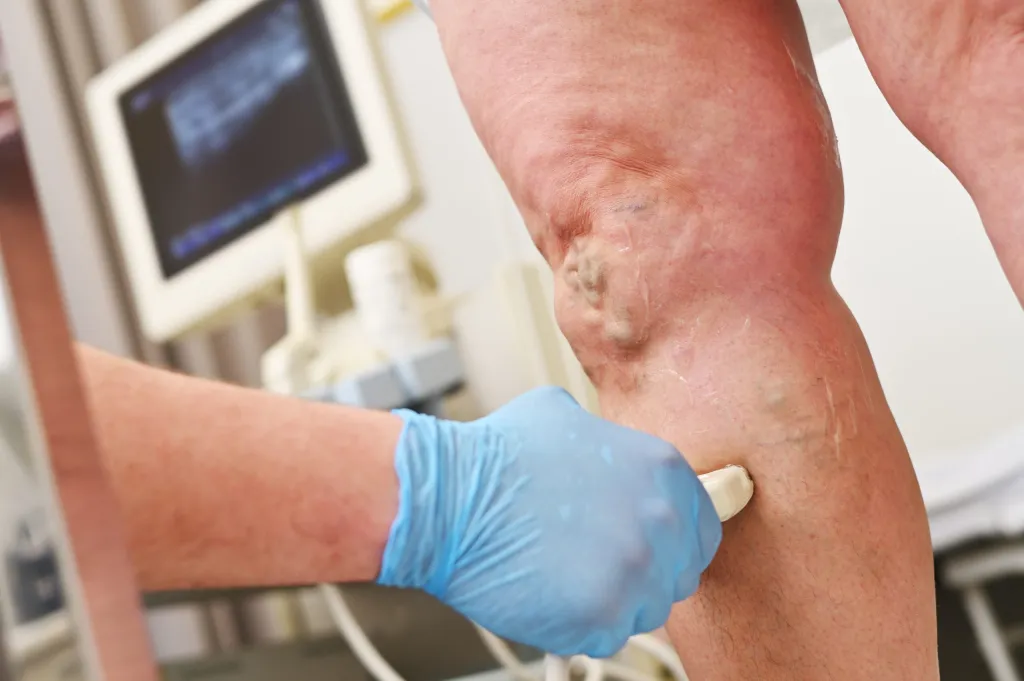Varicose veins affect millions of people worldwide, causing discomfort and self-consciousness. These enlarged, twisted veins typically appear on the legs and can range from minor cosmetic concerns to serious medical conditions. Understanding what causes them and knowing your treatment options can help you make informed decisions about your vascular health.
What Causes Varicose Veins?
Varicose veins are a common condition that occurs when the valves in your veins malfunction, allowing blood to pool and causing the veins to become enlarged and twisted. While often seen as a cosmetic concern, varicose veins can also lead to discomfort and other complications. Understanding the factors that contribute to their development can help you take steps to reduce your risk.
Key Factors Contributing to Varicose Veins:
- Age and Genetics: As you age, vein valves naturally weaken, increasing the likelihood of varicose veins. A family history of the condition also raises your risk.
- Pregnancy and Hormonal Changes: During pregnancy, increased pressure on veins and hormonal shifts relax the vein walls, often leading to varicose veins that may improve after delivery.
- Lifestyle Factors: Prolonged standing or sitting, especially in jobs such as teaching or retail, can place extra strain on your veins. Excess weight further exacerbates the pressure on venous valves.
- Gender Differences: Women are more prone to them due to hormonal fluctuations during life events like menstruation, pregnancy, and menopause. Hormonal medications, like birth control pills, can also weaken vein walls.
While some factors, such as genetics and hormonal changes, are beyond your control, others can be managed through lifestyle adjustments.
Can They Be Prevented?
While you can’t change your genetics or age, several lifestyle modifications can significantly reduce your risk of developing varicose veins or prevent existing ones from worsening. Regular exercise strengthens the muscles in your legs, helping to pump blood more effectively. Activities such as walking, swimming, and cycling promote healthy circulation without placing excessive strain on your veins.
Maintaining a healthy weight is beneficial, as excess weight puts additional pressure on your leg veins, causing them to work harder to circulate blood. A balanced diet and regular physical activity can help reduce this burden on your vascular system. If your job requires prolonged periods of standing or sitting, take regular breaks to move around. When standing, shift your weight from one foot to the other. When sitting, flex your ankles or take short walks every hour.
Whenever possible, elevate your legs above heart level to help blood flow back toward your heart, especially after long days on your feet or during rest periods. Wearing comfortable, supportive footwear with low heels can improve circulation and reduce strain on your calf muscles, unlike high heels, which interfere with the natural walking motion. These simple changes can go a long way in protecting your vein health..
What Treats Them Best?
Modern vein treatment has evolved significantly, offering several effective options depending on the severity of your condition. Most treatments are minimally invasive and can be performed in a vein clinic setting.
Compression Therapy
Compression stockings provide the foundation for treating varicose veins. These specially designed garments apply graduated pressure to your legs, promoting more efficient blood flow. Many people find significant relief from symptoms such as aching and swelling with consistent use of compression therapy.
Sclerotherapy
This popular treatment involves injecting a special solution directly into the affected vein. The solution causes the vein wall to collapse and seal shut, redirecting blood flow to healthier veins. Sclerotherapy is particularly effective for treating smaller varicose and spider veins.
Endovenous Laser Treatment
Laser treatment uses focused light energy to heat and close problematic veins from the inside. A thin laser fiber is inserted through a small incision, making this procedure minimally invasive. Recovery time is typically short, and most people return to normal activities within a few days.
Radiofrequency Ablation
Similar to laser treatment, radiofrequency ablation uses heat energy to close faulty veins. A small catheter delivers controlled radiofrequency energy to the vein wall, causing it to contract and seal. This technique often provides excellent results with minimal discomfort.
Surgical Options
For severe cases, surgical removal may be necessary. Ambulatory phlebectomy removes varicose veins through tiny incisions, while vein stripping addresses larger problematic veins. These procedures are typically reserved for cases where less invasive treatments haven’t been effective.
Consult a Specialist
Varicose veins are more than a cosmetic issue. They can signal circulatory problems that may worsen without treatment. Early care can prevent complications like blood clots, skin changes, or ulcers. If you experience symptoms such as leg pain, swelling, or visible veins, don’t wait. A vein specialist can assess your condition and suggest the right treatment. Schedule a consultation to explore options and feel more comfortable and confident..
- FREHF – The Revolutionary Future Of Human-Centered Technology!
- Adsy.Pw/Hb3 – Boost Your SEO And Drive More Traffic!
- Fitness Based Vacations By Timeshealthmage.com!
- TimesHealthMag Tips For Improving Sleep Quality – Expert Advice For Better Rest!
- How TimesHealthMage Helps Improve Your Lifestyle Habits!


Leave a Reply